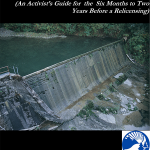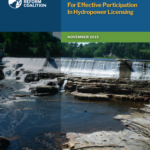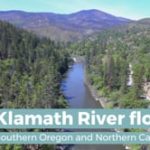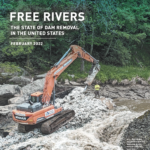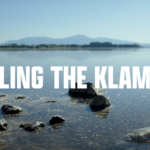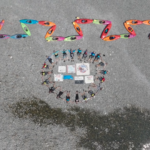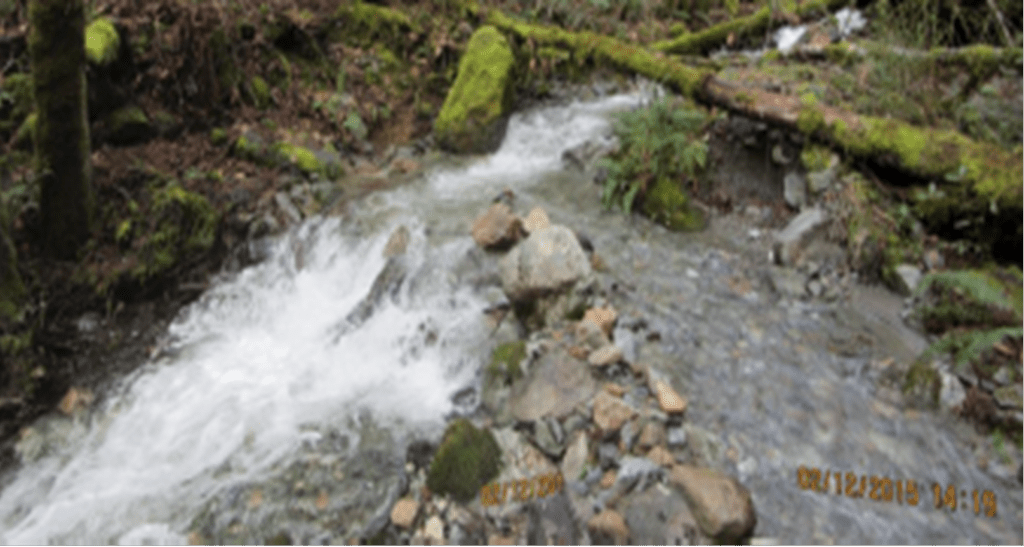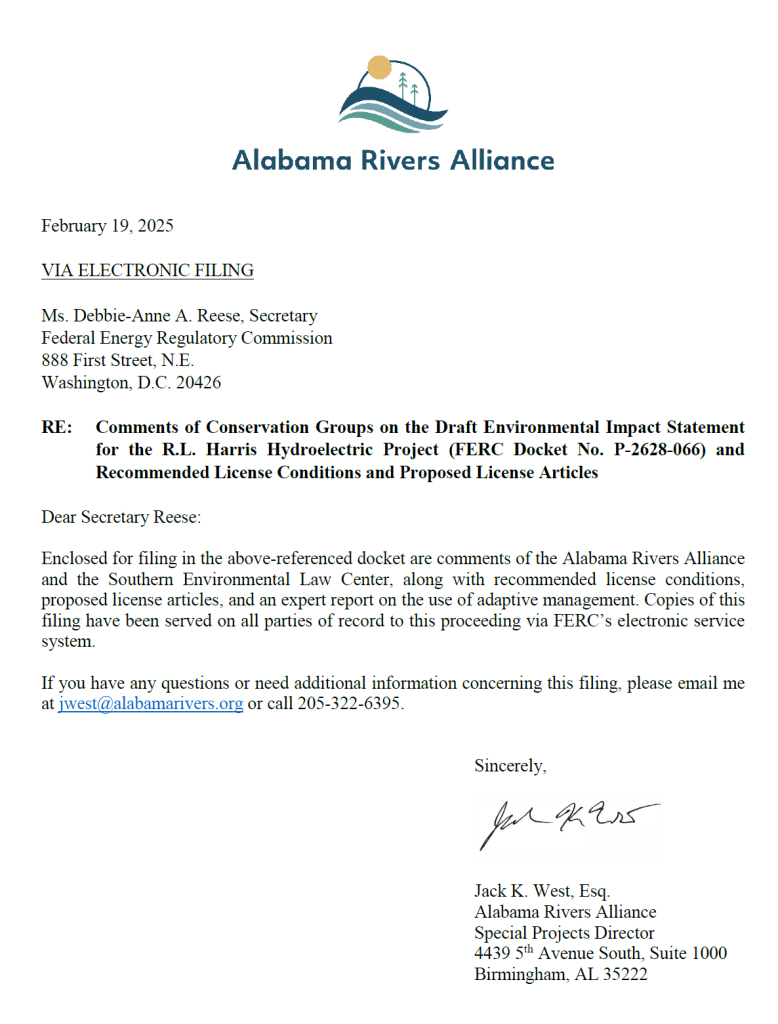Copco 2 P-2082
General information | |
| Waterway |
Klamath River |
| Current status | Removed |
| Type of facility | Conventional Hydro |
| Type of permit | FERC License |
FERC information | |
| FERC docket # | P-2082 |
| FERC project name | Klamath |
| Other projects with this FERC number | |
| Permit issued | 1/23/54 |
| Permit expiration | 2/24/06 |
Ownership and operation | |
| Owner | PacifiCorp |
| Owner type | Investor-Owned Utility |
| Year first online (conventional hydro) | 1925 |
| Transmission or distribution system owner | PacifiCorp |
Power and generating capacity | |
| Number of units | 2 |
| Total capacity from hydraulic turbine-generator units within each plant | 27.0 MW |
| Average annual net hydropower generation | 108,147.0 MWH |
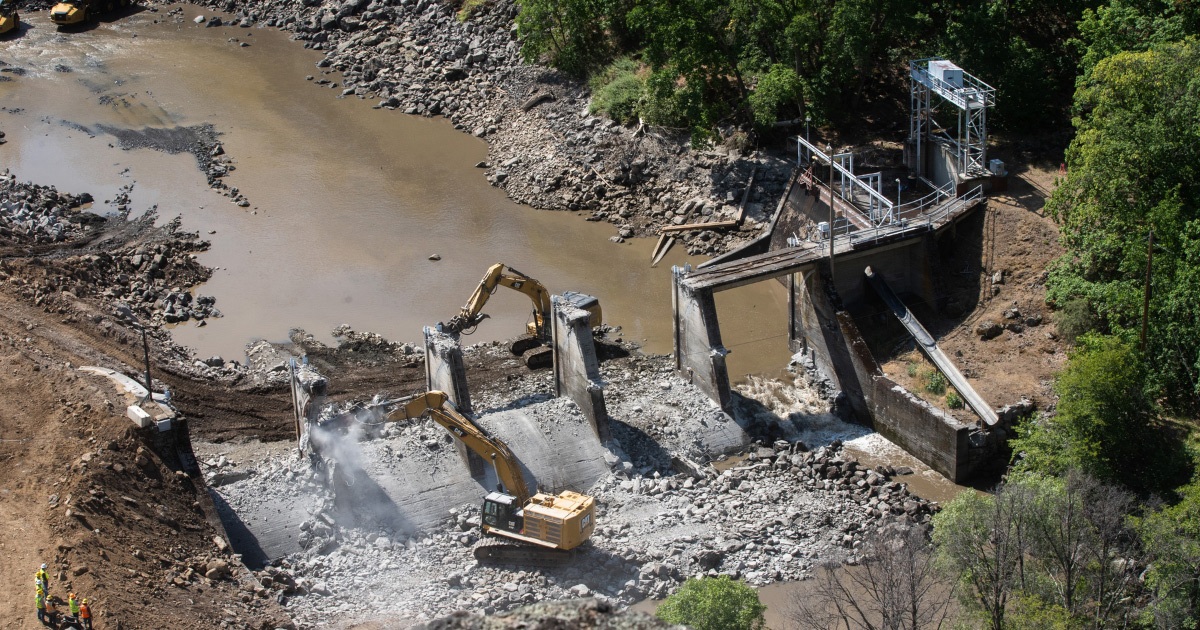
Copco 2 dam being removed in June 2023.
Klamath Hydropower Project Facts
Year built: 1918 and later
Capacity: 160 megawatts
Generation provided: 1% of PacifiCorp demand
Miles of habitat blocked: 350
Fish species affected: coho, chinook, steelhead, lamprey
Klamath Hydropower Project Consists of:
- Keno Dam, a 24-ft non-hydro dam that smoothes return flows from the Bureau’s Klamath Irrigation Project.
- JC Boyle Dam, a 60-ft high dam and 90 MW powerhouse that dewaters 4.3 miles of river.
- Copco 1 Dam, a 120 ft-high dam and 20 MW powerhouse.
- Copco 2 Dam, a 25 ft-high dam and 27 MW powerhouse that dewaters 1.4 miles of river.
- Iron Gate Dam, a 162 ft dam and 18 MW powerhouse.
- Fall Creek Dam, a small diversion dam and 2.2 MW powerhouse on a tributary to the Klamath.
The Klamath River begins in a high arid basin ringed by the volcanic peaks of the Cascade Range in Oregon and flows for over 250 miles to the Pacific south of Crescent City in California.
Much of the wetland habitat of the Upper Klamath Basin was converted to irrigated agriculture, but remaining habitat in National Wildlife Refuges still attracts a majority of migrating birds on the Pacific Flyway.
Downstream of the Upper Klamath Lake, the river plunges into a canyon where PacifiCorp operates five mainstem dams, two in Oregon and three in California. In between two of these dams is a Wild and Scenic stretch that is well-known for its fishing and whitewater rafting.
Since the first dam was constructed in 1918, salmon and steelhead have been prevented from reaching more than 350 miles of historic spawning and rearing habitat in the upper basin.
Iron Gate dam blocks 200-250 mi. of historic salmon and steelhead spawning habitat.
Type of proceeding: Hybrid
Threatened/endangered: Coho salmon
Recreational values: Whitewater below JC Boyle dam and powerhouse
Other values: Yurok reservation on lower 44 mi. of river. 70% of the reservation is without electricity- tribal culture and economy depends on healthy fish populations.
Is there something you’d like to add or correct? Please let us know.
Related resources
Related posts
- From Trout Unlimited 04/04/24
Klamath Reservoir Drawdowns: Short-term Costs for much larger long-term gains - From California Trout 03/08/24
Wild Klamath River Fish Unaffected by Hatchery Fish Mortality Event, Karuk Tribe Reports - From California Trout 03/06/24
Klamath River Begins to Find its Way Home - From American Rivers 03/06/24
On the Klamath, Dam Removal Alone is Not Enough - From American Rivers 02/09/24
Progress Report: two years in to the Bipartisan Infrastructure Law - From Trout Unlimited 02/07/24
New plan aims to recover native salmon and steelhead in California, reflects TU restoration and policy priorities - From California Trout 02/02/24
CalTrout and Partners Support Governor Newsom’s California Salmon Strategy - From California Sportfishing Protection Alliance 02/01/24
Newsom “Strategy” Condemns Central Valley Salmon to “Hotter, Drier Future” - From California Trout 01/31/24
As Klamath Dams Come Out, Restoration Project Develops on Important Klamath Tributary - From Trout Unlimited 01/18/24
Klamath Reservoir Drawdown Begins - From California Trout 01/12/24
Reservoir Drawdown Begins for Klamath River Dam Removal - From American Rivers 01/11/24
Dam Removal on the Klamath: Reflections on How We Got here - From American Whitewater 11/09/23
An Important Milestone on the Klamath – Removal of the Copco 2 Dam Complete! - From American Rivers 08/28/23
Sedimentation and Dam Removal: Bringing a River Back to Life - From Trout Unlimited 07/13/23
First of the Klamath dams comes down - From California Trout 06/26/23
Copco 2 Deconstruction Begins on Klamath River - From American Rivers 06/23/23
6 things You Need To Know About The Klamath River Dam Removals - From California Trout 03/31/23
Klamath Dam Removal: It’s Happening - From Trout Unlimited 03/09/23
Planning for Salmon and Steelhead to Return as the Klamath Dams Come Down - From Trout Unlimited 01/31/23
Listen now: Lessons from the Klamath Dams
News and updates
From California Sportfishing Protection Alliance2/25/2025
State Water Board Takes Action to Protect Klamath River Salmon and Steelhead
From Alabama Rivers Alliance2/21/2025
ARA and SELC submit comments for the R.L. Harris Dam relicensing on the Tallapoosa River



